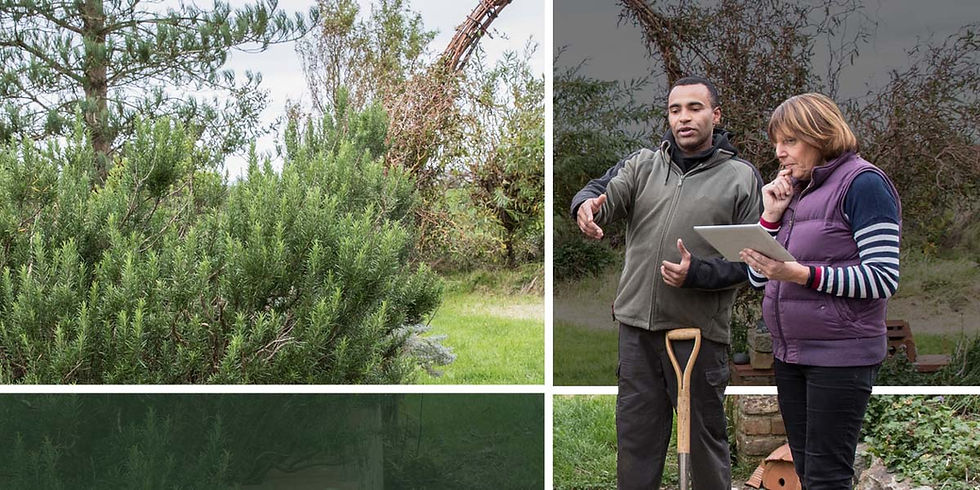Preparing Your Maryland garden soil
- Rooted in Nature

- May 23, 2023
- 3 min read
Updated: Apr 30, 2024
Healthy soil is the basis of healthy plants and a healthy environment. When garden soil is in good shape there is less need for fertilizers or pesticides. When building soil you not only improve your plants health, but you can also improve your own.

Organic soil is rich in humus, the end result of decaying materials such as leaves, grass clippings and compost. It holds moisture, but drains well. Good organic garden soil is loose and fluffy — filled with air that plant roots need — and it has plenty of minerals essential for vigorous plant growth. It is alive with living organisms — from earthworms to fungi and bacteria — that help maintain the quality of the soil.
Compost
Adding organic matter in the form of compost and aged manure, or using mulch or growing cover crops (green manures), is the best way to prepare soil for planting. Adding chemical fertilizers will replenish only certain nutrients and do nothing for maintaining good, friable soil. Organic matter will help supply everything your plants need. There are many rich options at your local nursey for purchase, or check out this Rooted in Nature composting blog to learn more.
Air
Just like humans, plants need air, both above ground for photosynthesis and in the soil as well. Air in the soil holds atmospheric nitrogen that can be converted into a usable form for plants. Soil oxygen is also crucial to the survival of soil organisms that benefit plants.
Good soil provides just the right space between its particles to hold air that plants will use. Silty and heavy clay soils have small particles that are close together. These dense soils have little air. Sandy soils have the opposite problem; their particles are too big and spaced out. The excessive amount of air in sandy soil leads to rapid decomposition of organic matter.
Water
All forms of life, including plants and soil organisms, need water, but not too much or too little. Healthy soil should be about 25% water.
In soils with too much pore space (sandy soils), water quickly drains through and cannot be used by plants. In dense, silt or clay soils, the soil gets waterlogged as all the pore space is filled with water. This will suffocate plant roots and soil organisms.
The best soils have both small and large pore spaces. Adding organic matter (see below) is the best way to improve the structure of your soil through the formation of aggregates. Additionally, organic matter holds water so that plants can use it when they need it.
Fertilizer
Dry or liquid fertilizer can add nutrients to the soil that might not get there any other way. Organic garden fertilizers work a little slower than their synthetic counterparts, but they release their nutrients over a longer time frame. Additionally synthetic fertilizers are bad for the environment and can make the soil worse in the long run as beneficial microorganisms are killed off.
Organic dry fertilizers are mixed into the soil according to the directions on the label and then watered. They work more slowly than liquid fertilizers, but last longer. Fertilizer blends contain different amounts of nitrogen, phosphorus and potassium.
For help with all your landscaping needs contact us 443-846-0199 or info@rootedinnaturemd.com - we can help you make (and install) good mulching choices.



Comments